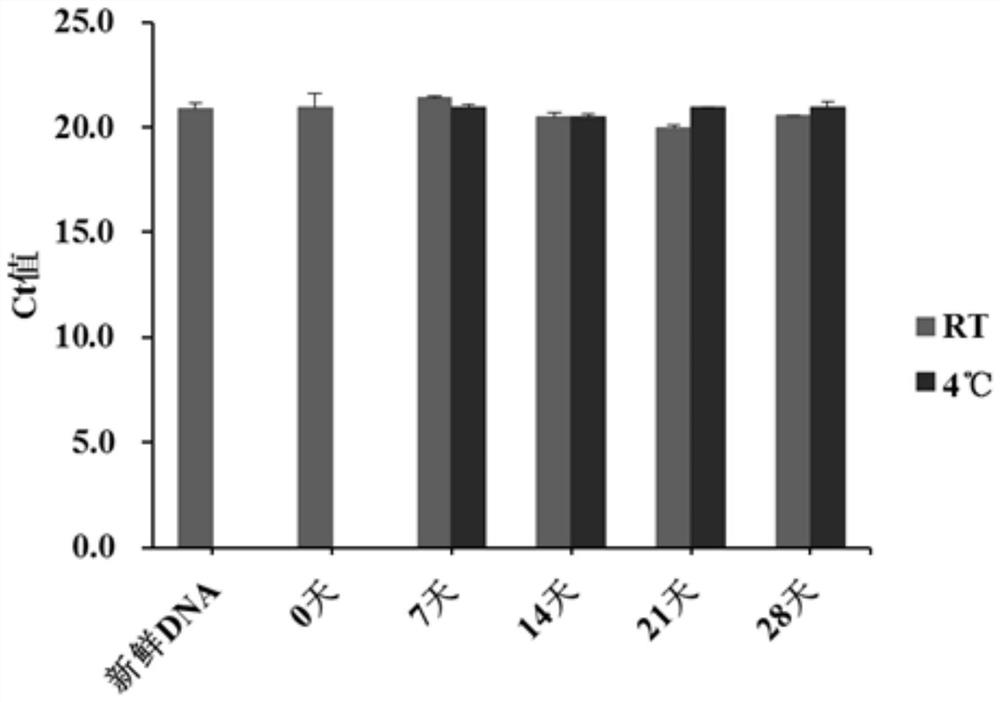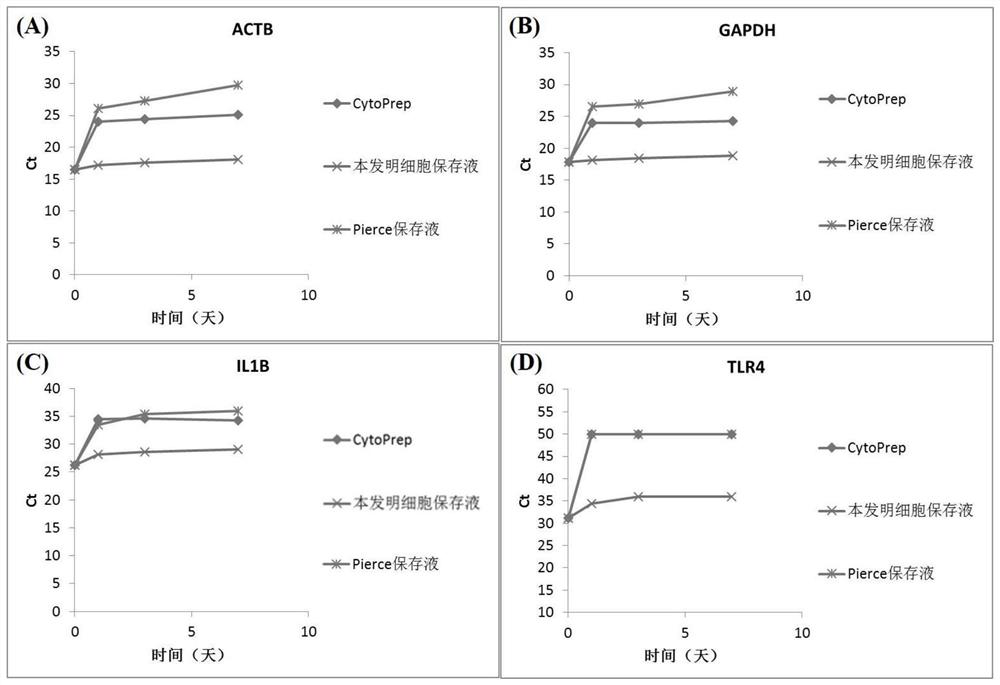Cell preserving fluid and using method thereof
A technology for preserving liquid and cells, applied in the field of biomedicine, can solve the problems of limiting nucleic acid detection capacity, manpower and material consumption, etc., and achieve the effect of saving sample collection costs, speeding up the detection process, and speeding up the efficiency of nucleic acid detection.
- Summary
- Abstract
- Description
- Claims
- Application Information
AI Technical Summary
Problems solved by technology
Method used
Image
Examples
Embodiment 1
[0022] Use 1% sodium lauryl sulfate, 0.1% guanidine isothiocyanate, 0.1% ethylenediaminetetraacetic acid, 0.05% sodium chloride, 0.05% potassium chloride, 0.05% disodium hydrogen phosphate, 0.05% dihydrogen phosphate Potassium, 0.05% Tris-HCl buffer solution (pH=8.0), 0.1% sucrose and 25ug / ml Bianka penicillin were prepared as cell preservation solution. For samples of fresh HeLa cell line placed in cell preservation solution and stored at 37°C for 0 day, 1 day, 3 days, and 7 days, after RNA was extracted using Qiagen’s RNeasy Mini kit, fluorescent quantitative PCR was performed to detect ACTB, GADPH , IL1B, TLR4 and other four genes, each group of samples was repeated 3 times. like figure 1 As shown, fresh RNA and RNA treated with cell preservation solution had no significant change in the RNA detection Ct values of the four genes within 0-7 days of storage at 37°C.
Embodiment 2
[0024] Use 1% guanidine isothiocyanate, 0.1% ethylenediaminetetraacetic acid, 0.05% sodium chloride, 0.05% potassium chloride, 0.05% disodium hydrogen phosphate, 0.05% potassium dihydrogen phosphate, 0.01% Tris-HCl buffer (pH=8.0), 0.1% glucose and 25ug / ml bianka penicillin were prepared as a cell preservation solution. Using the high-risk HPV in vitro molecular diagnostic kit of Suzhou Guoke Wenpu Biotechnology Co., Ltd., the fresh HeLa cell line and the cell preservation solution were stored at 4°C and room temperature (RT) for 0 days, 7 days, 14 days, and 21 days. For the samples of Day 1 and Day 28, the DNA was extracted using the Genome Extraction Kit of Suzhou Guoke Wenpu Biotechnology Co., Ltd., and then detected by fluorescent quantitative PCR. Each group of samples was repeated 3 times.
[0025] like figure 2 As shown, there is no significant difference in Ct value between fresh DNA and DNA treated with cell preservation solution at 4°C and room temperature for 28 d...
Embodiment 3
[0027] Use 1% sodium lauryl sulfate, 0.1% guanidine isothiocyanate, 0.1% ethylenediaminetetraacetic acid, 0.05% sodium chloride, 0.05% potassium chloride, 0.05% disodium hydrogen phosphate, 0.05% dihydrogen phosphate Potassium, 0.01% Tris-HCl buffer solution (pH=8.0), 0.1% sucrose and 25ug / ml biankapenicillin were prepared as a cell preservation solution. For samples of fresh HeLa cell lines placed in cell preservation solution and stored at 37°C for 0 day, 1 day, 3 days, and 7 days, the alcohol-based CytoPrep preservation solution of VersaBio Company and the Pierce preservation solution of Thermo Fisher Corporation were used at the same time Preserve fresh HeLa cell lines in cell preservation solution and store at 37°C for 0 days, 1 day, 3 days, and 7 days. After the RNA was extracted by Qiagen’s RNeasy Mini kit, four genes including ACTB, GADPH, IL1B, and TLR4 were detected by fluorescent quantitative PCR, and each group of samples was repeated 3 times. like image 3 As sh...
PUM
 Login to View More
Login to View More Abstract
Description
Claims
Application Information
 Login to View More
Login to View More - R&D
- Intellectual Property
- Life Sciences
- Materials
- Tech Scout
- Unparalleled Data Quality
- Higher Quality Content
- 60% Fewer Hallucinations
Browse by: Latest US Patents, China's latest patents, Technical Efficacy Thesaurus, Application Domain, Technology Topic, Popular Technical Reports.
© 2025 PatSnap. All rights reserved.Legal|Privacy policy|Modern Slavery Act Transparency Statement|Sitemap|About US| Contact US: help@patsnap.com



